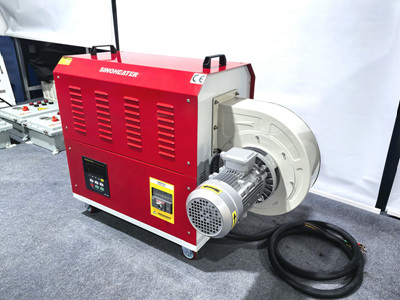Choosing a Heat Blower: Key Considerations for Airflow Speed Adjustment Levels
When selecting a heat blower, the ability to customize airflow speed is critical for optimizing performance across diverse applications. The number of speed adjustment levels directly impacts versatility, energy efficiency, and user control. Below are essential factors to evaluate when assessing this feature.
Precision in Temperature and Airflow Control
A heat blower with multiple speed settings allows users to fine-tune output based on environmental demands. For instance, lower speeds are ideal for maintaining consistent warmth in small spaces without overheating, while higher speeds can rapidly distribute heat in larger areas. This granularity ensures the device adapts to changing conditions, such as fluctuating room temperatures or varying insulation levels, without manual intervention.
Energy Efficiency Across Different Settings
The relationship between speed levels and energy consumption is a practical concern. Machines with incremental adjustments enable users to select the minimum power required for a task, reducing wastage. For example, drying delicate materials or warming a workspace may only need low-speed operation, whereas quick heating or ventilation might demand maximum output. A heat blower lacking intermediate settings could force users into inefficient “high or low” binaries, increasing long-term costs.
User Experience and Operational Noise
Advanced speed control enhances comfort by minimizing disruptions. Lower settings typically generate less noise, making them suitable for quiet environments like offices or bedrooms. Conversely, high-speed operation may produce audible fan noise, which could be problematic in noise-sensitive settings. A heat blower with a wide range of adjustable levels empowers users to balance performance and tranquility, ensuring the device remains unobtrusive when needed.
Adaptability to Specific Use Cases
Different applications demand tailored airflow solutions. In industrial settings, rapid heat distribution might require multiple high-speed options, while residential users may prioritize gentle, consistent warmth. A heat blower with limited speed adjustments risks being underutilized or overworked, leading to premature wear. By contrast, a model offering 5–10 distinct levels can accommodate scenarios like spot heating, area drying, or supplemental ventilation without compromising functionality.
Long-Term Durability and Maintenance
Frequent switching between extreme speed settings can strain motor components over time. A heat blower designed with balanced speed increments reduces mechanical stress by avoiding abrupt power surges. Additionally, devices with intuitive controls—such as digital displays or preset modes—simplify operation and encourage proper usage, extending the lifespan of internal parts.
Safety Considerations for Variable Output
Adjustable speeds also play a role in risk mitigation. For example, high-velocity airflow could disperse dust or allergens in sensitive environments, while overly aggressive heating might damage flammable materials. A heat blower with calibrated speed options allows users to maintain safe operating parameters, particularly in healthcare facilities, workshops, or homes with pets and children.
By prioritizing these aspects, buyers can identify a heat blower that aligns with their specific needs, ensuring efficient, safe, and user-friendly performance across all applications.




